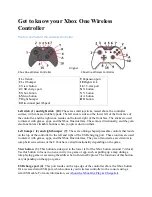
TC1796
System Units (Vol. 1 of 2)
LMB External Bus Unit
User’s Manual
13-10
V2.0, 2007-07
EBU, V2.0
13.3.3
Arbitration Modes
The arbitration mode of the EBU can be selected through configuration pins during reset
(see Boot Selection Table on
) or by programming the EBU_CON.ARBMODE
bit field (see
) after reset. Four different modes are available:
•
No Bus Mode
•
Sole Master Mode
•
Arbiter Mode
•
Participant Mode
13.3.3.1 No Bus Arbitration Mode
All accesses of the EBU to devices on the external bus are prohibited and will generate
a PLMB bus error. The EBU operates in Hold Mode all the time. The HOLD and HLDA
arbitration inputs are ignored and BREQ arbitration output remains at high (inactive)
level.
No Bus Mode is selected by EBU_CON.ARBMODE = 00
B
.
13.3.3.2 Sole Master Arbitration Mode
The EBU is the only master on the external bus; therefore no arbitration is necessary and
the EBU has access to the external bus at any time. The EBU operates in Owner Mode
all the time. The HOLD arbitration input is ignored, and the HLDA and BREQ arbitration
outputs remain at high (inactive) level.
Sole Master Mode is selected by EBU_CON.ARBMODE = 11
B
.
13.3.3.3 Arbiter Mode Arbitration Mode
The EBU is the default owner of the external bus (e.g. applicable when operating from
external memory). Arbitration is performed if an external master (e.g. second TriCore)
needs to access the external bus.
The EBU is cooperative in relinquishing ownership of the external bus while operating in
Arbiter Mode. When the HOLD input is active, the EBU will generate a “retry” in response
to any attempt to access the external bus from the internal PLMB. However, the EBU is
aggressive in regaining ownership of the external bus while operating in Arbiter Mode.
The EBU, having yielded ownership of the bus, will always request return of ownership
even if there is no EBU external bus access pending.
Arbiter Mode is selected by EBU_CON.ARBMODE = 01
B
.
show the functionality of the arbitration signals in Arbiter
Mode.
















































